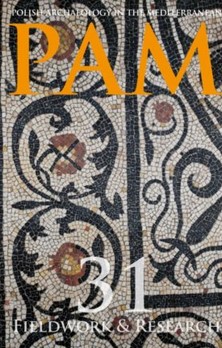Continuity and change in the ceramic assemblage from Metsamor between the 10th and 7th centuries BCE (new data from the 2021 season)
Continuity and change in the ceramic assemblage from Metsamor between the 10th and 7th centuries BCE (new data from the 2021 season)
Author(s): Mateusz Iskra, Tigran Zakyan, Maciej Sobczak, Bartosz PlacakSubject(s): Archaeology, Cultural history, Visual Arts, Historical Geography, Local History / Microhistory, Ancient World, History of Art
Published by: Wydawnictwa Uniwersytetu Warszawskiego
Keywords: South Caucasus; Iron Age; Urartian pottery; Lchashen–Metsamor pottery;
Summary/Abstract: The morphology and distribution of what is considered as a local pottery assemblage from the Iron I and Iron II phases, which in Metsamor is part of a larger cultural phenomenon designated as the Lchashen–Metsamor pottery horizon, is the subject of continued discussion in terms of its continuity and change. This presentation, expanding on previous, preliminary research (see Iskra and Zakyan 2019; 2022), considers the input of new findings resulting from an examination of the results of the most recent excavations by an Armenian-Polish team, concentrated on phases of peak development (V and IVb) and gradual decline of urban life (IVa) in the Iron Age at this fortress site in Armenia. The discussion also contextualizes current knowledge of the presence of Urartian Red Burnished Ware in the Metsamor settlement, especially during the initial phase of Urartian presence, that is, in Phase IVa.
Journal: Polish Archaeology in the Mediterranean
- Issue Year: 1/2022
- Issue No: XXXI
- Page Range: 153-172
- Page Count: 20
- Language: English

